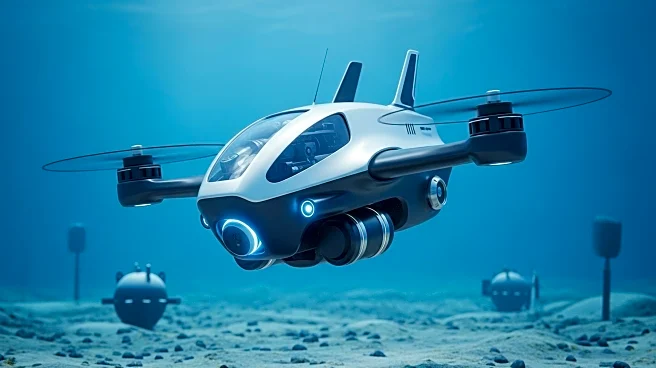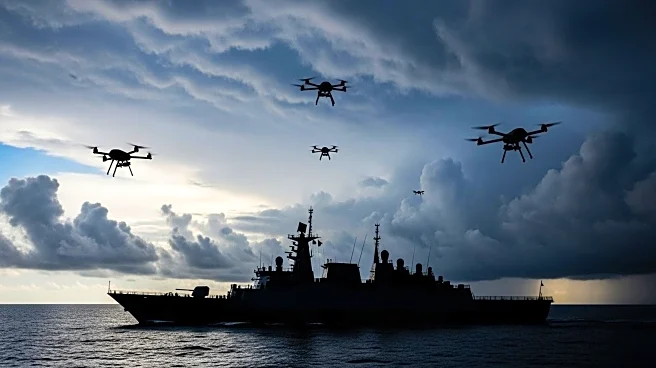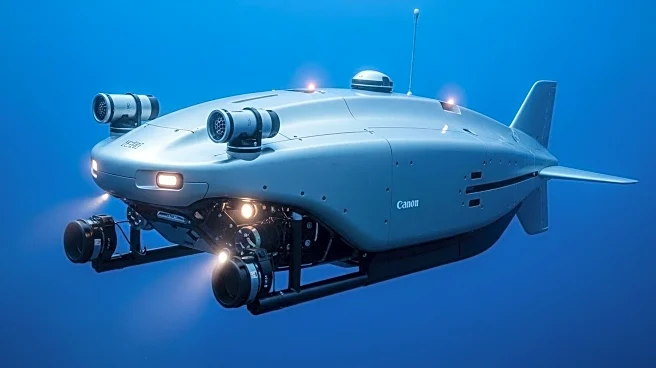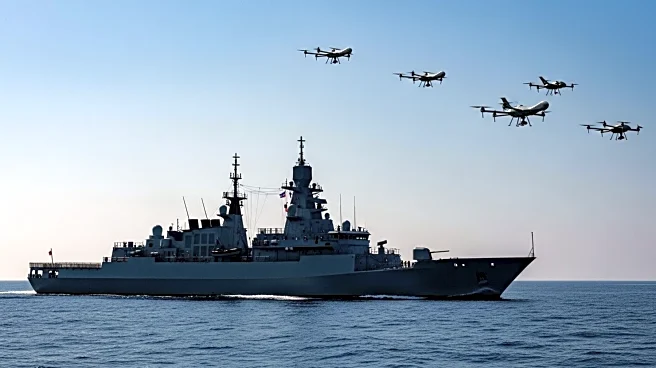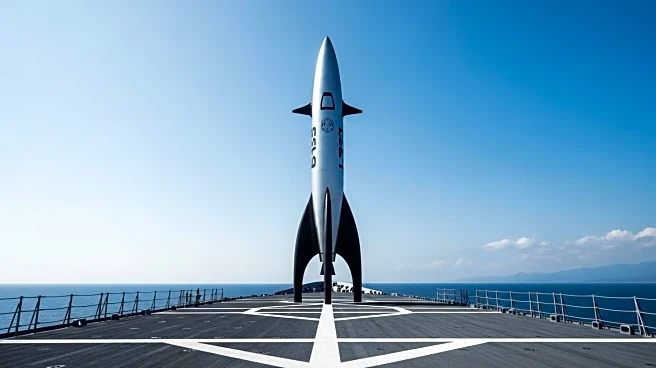What's Happening?
European navies, including those from Germany, Portugal, and France, have been testing new drone technologies for undersea operations as part of NATO's Dynamic Messenger and REPMUS exercises. These exercises, held off the coast of Sesimbra, Portugal, involved over 200 unmanned systems and focused on mine countermeasures warfare and the protection of critical underwater infrastructure. The German Navy showcased the Greyshark, an autonomous underwater vehicle equipped with advanced sonar and detection systems, capable of long-range operations. Additionally, the Sonobot and Quadroin drones were used for underwater positioning and mine detection. The exercises aimed to enhance coordination and control of multiple robotic systems, a complex task requiring significant orchestration. Despite technological advancements, challenges such as overheating and collisions were encountered, underscoring the need for further refinement.
Why It's Important?
The testing of these advanced drone technologies is significant for enhancing naval capabilities in mine warfare and underwater infrastructure protection. As navies increasingly rely on unmanned systems, the ability to conduct operations with minimal human risk becomes crucial. The integration of artificial intelligence into these systems could further revolutionize threat detection and classification, reducing the reliance on human operators. However, the challenges faced during the exercises, such as technical malfunctions and environmental factors, highlight the ongoing need for development and adaptation. The successful implementation of these technologies could provide strategic advantages in maritime security and defense, impacting military procurement and international security dynamics.
What's Next?
Future steps involve integrating artificial intelligence into these unmanned systems to improve autonomous threat classification. Continued testing and refinement are expected to address the technical challenges encountered, such as overheating and system collisions. As these technologies evolve, navies will likely focus on enhancing coordination and control mechanisms to manage multiple robotic systems effectively. The outcomes of these exercises may influence future military procurement decisions and international collaborations in maritime security.
Beyond the Headlines
The shift towards unmanned systems in naval operations reflects broader trends in military technology, emphasizing automation and reduced human risk. The ethical implications of deploying autonomous systems in warfare, particularly regarding decision-making and accountability, remain a topic of discussion. Additionally, the environmental impact of increased drone activity in marine ecosystems warrants consideration, as does the potential for these technologies to be adapted for civilian applications in underwater exploration and resource management.

